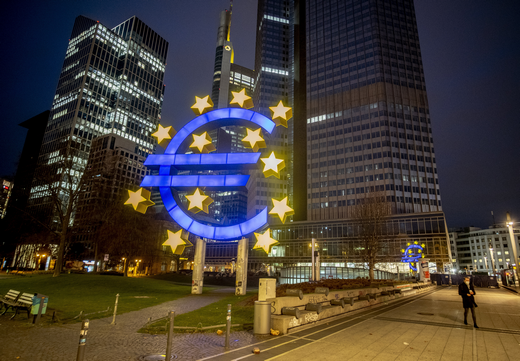Inflation in the euro area is expected to pick up again in October, but markets still expect the European Central Bank to cut rates further at its next meeting on December 12.
CPI inflation is expected to be 1.9% higher than its October 2023 level, according to FactSet consensus, which is higher than last month's 1.7% rise from the same month last year. In this case, headline inflation is expected to remain below the 2% target.
Core inflation, which measures prices excluding energy and food costs, is expected to rise 2.6% in October, slightly lower than September's 2.7%.
“After an unexpected decline to 1.7% in September, headline inflation is expected to rebound to 1.9% in October,” said Michael Field, European market strategist at Morningstar. .
“Surprisingly, this slight increase in inflation is likely to be received favorably by markets, which have raised concerns over the last month that the European Central Bank may have cut interest rates too slowly, or worse, that we are entering a deflationary environment. The question has been raised whether there is.
Core inflation is higher than the target inflation level, but as Field explains, this number is expected to take longer to fall than headline interest rates.
As of September 2024, the largest contributors to the euro area annual inflation rate (HICP) were services (+1.76 percentage points, pp), followed by food, alcohol and tobacco (+0.47 points), and non-energy industrial products (+ 0.12 points). ) and energy (-0.60 pp).
Why is inflation expected to rise in October?
Rising inflation is no surprise to markets. Prices are “expected to rise in the coming months, before falling towards the target within the next year,” the European Central Bank said in a statement after its October board meeting.
The ECB emphasized that one of the main reasons was wage increases. However, upward wage pressure is expected to ease gradually.
Headline inflation is expected to rise in October, but remains below the ECB's 2% target. By contrast, core inflation remains high, but Goldman Sachs expects it to slow toward the end of the year.
“In preliminary reports to be released on Thursday, October 31st, we expect core HICP inflation in the euro area to decline slightly to 2.65% y/y in October, compared to 2.67% y/y in September,” analysts said. said in an October 27 note. .
“Our new month-on-month core inflation forecast is slightly higher in October and November due to stronger package holiday and catering assumptions, but significantly lower in December. “Inflation forecast is 2.49% in December, 0.1 percentage points lower than last time, and 2.6% year-on-year in the fourth quarter, 0.3 percentage points below the ECB staff forecast in September,” they said in their previous note on October 24. said.
Will the ECB cut interest rates in December?
At the last monetary policy meeting, ECB President Lagarde said the process of eliminating inflation was “progressing well”, but central bank policymakers also acknowledged downside risks to eurozone economic growth.
Filippo Casagrande, head of investment steering, said: “The weakening of the German economy and the possible negative impact on growth from austerity measures implemented by large countries such as France and Italy reassured the ECB and analysts that the 2% structure “We are comfortable with a disinflationary scenario towards our goal.” Head of Sustainability at Generali Investments.
On October 17th, the ECB cut the main deposit facility interest rate by 0.25 percentage points to 3.25%, but in a Reuters poll on October 8th, 90% of economists believed that an additional rate cut in December had already been agreed, indicating that the short-term Financial markets are pricing in a further 0.25 percentage point cut in December. However, as economic growth slows, there is growing speculation in the market that interest rates will be cut more broadly and quickly.
“With inflation settling at or near the levels we need and unemployment stabilizing, the ECB needs to reaffirm its course of action. Another rate cut by the end of 2024. was expected, and given the data, it's quite possible,” Field said.
“The market is discounting a 35 basis point rate cut for December, meaning analysts are unsure whether to decide on a 25 basis point or 50 basis point rate cut at the last meeting of the year. In late 2025. “The market continues to see reductions of up to 1.9%, with five cumulative reductions already expected by mid-2025,” Casagrande said.
The author owns no shares in any securities mentioned in this article. Learn about Morningstar's editorial policy.

